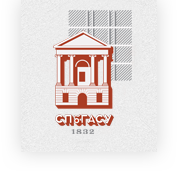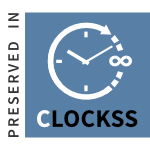The Effect of Written Corrective Feedback on Writing Accuracy in Senior High School
DOI:
https://doi.org/10.63313/LLCS.9026Keywords:
Written Corrective Feedback, writing accuracy, English writing, types of feedbackAbstract
The effectiveness of Corrective Feedback on the development of second language proficiency has been of great interest to second language researchers. This study reviews the nearly two decades in which scholars at home and abroad have explored the effects of Written Corrective Feedback (WCF) on English writing accuracy. The results of a large number of studies show that (1) Written Corrective Feedback has a positive effect on writing accuracy, and this effect has a certain degree of durability; (2) the effect of feedback is affected by factors such as the types of feedback, the sources of feedback, individual differences of learners, and language forms. A few studies hold the opposite view. Based on this, this paper will continue to explore how to ensure that Written Corrective Feedback has a lasting positive effect.
References
[1] Bitchener, J. & Knoch, U. (2008). The value of written corrective feedback for migrant and international students. Language Teaching Research, (12), 409-431.
[2] Bitchener, J. & Storch, N. (2016). Written Corrective Feedback for L2 Development. Bristol: Multilingual Matters.
[3] Bruton, A. (2009). Designing research into the effects of grammar correction in L2 writing: Not so straightforward. Journal of Second Language Writing, 18(2), 136-140.
[4] Caras, A. (2019). The Routledge handbook of second language research in classroom learning. New York, NY: Routledge.
[5] Chen, W. & Liu, G. (2021). Effectiveness of corrective feedback: Teachers’ perspectives. Iranian Journal of Language Teaching Research, 9(1), 23-42.
[6] DeKeyser & Robert M. (1993). The effect of error correction on L2 grammar knowledge and oral proficiency. Modern Language Journal,(77), 501-514.
[7] Dobao, A.F. (2012). Collaborative writing tasks in the L2 classroom: Comparing group, pair, and individual work. Journal of Second Language Writing, 21(1), 40-58.
[8] Ellis, R. (2009). A typology of written corrective feedback types. ELT Journal, 63(2), 97-107.
[9] Hyland, K. & Hyland, F. (2019). Contexts and issues in feedback on L2 writing [A]. In K. Hy-land, & F. Hyland (eds.). Feedback in Second Language Writing: Contexts and Issues [C]. Cambridge: Cambridge University Press.
[10] Kang, E. & Han, Z. (2015). The efficacy of written corrective feedback in improving L2 written accuracy: A meta-analysis. Modern Language Journal, 99(1), 1-18.
[11] Keh, C. (1990). Feedback in the writing process: a model and methods for implementation. Elt Journal, (4), 294-304.
[12] Lalande, J. F. (1982). Reducing composition errors: An experiment. The Modern Language Journal, 66 (2), 140-149.
[13] Lee, I. (2013). Research into practice: Written corrective feedback. Language Teaching, 46(1), 108-119.
[14] Lee, I. (2020). Utility of focused/comprehensive written corrective feedback research for authentic L2 writing classrooms. Journal of Second Language Writing, (49), 100734.
[15] Long, M. H. (1985). Input and Second Language Acquisition Theory. Rowley, Mass: New-bury House.
[16] Mao, S.S. & Crosthwaite, P. (2019). Investigating written corrective feedback: (Mis)alignment of T teachers’ beliefs and practice. Journal of Second Language Writing, 45, 46-60.
[17] Plonsky, L. (2012). Replication Research in Applied Linguistics. Cambridge: Cambridge University Press.
[18] Pinner, R. S. & Sampson, R. J. (2020). Humanizing TESOL research through the lens of complexity thinking. TESOL Quarterly, 55(2), 633-642.
[19] Storch, N. (2018). Written corrective feedback from sociocultural theoretical perspectives: A research agenda. Language Teaching, 51(2), 262-277.
[20] Zarifi, A. (2017). Iranian EFL learners’ reaction to teacher’s written corrective feedback. International Journal of Applied Linguistics & English Literature, 6(3), 254-261.
[21] Han Ye, Xu Yueting. (2020). A Study on Emotional Experience and Emotion Regulation Strategies in Second Language Writing Learning from the Perspective of Positive Psychol-ogy: Taking Written Corrective Feedback as an Example. Foreign Language World, (1), 50-59.
[22] Hou Lijuan, et. al. (2022). Hotspots and Trends in Foreign Corrective Feedback Research since the 21st Century: A Visualization Analysis Based on Biblioshiny. Foreign Language World, (1), 39-47.
[23] Miao Jia, Yao Weiwei. (2023). A Meta-analysis Study on the Impact of Written Error Cor-rection Feedback on the Grammatical Accuracy of English Writing. Foreign Language Teaching Theory and Practice, (4), 50-61.
[24] Xiao Pingfei, Liu Xinting. (2021). A Study on the Influence of Direct Focused and Direct Unfocused Written Corrective Feedback on the Acquisition of English Writing Prepositions. Computer-Assisted Foreign Language Education, (3), 44-49+7.
[25] Xu Jinfen, Wang Yajie. (2021). A Review of Research on the Effectiveness of Corrective Feedback Abroad. Foreign Language Education, (1), 31-45.
[26] Xu Qian. (2021). Problems and Countermeasures in the Evaluation of Middle School Eng-lish Writing. Theory and Practice of Education, (5), 59-61.
[27] Zeng Dongmei, Shao Jinshi. (2017). The Role of Written Feedback in the Learning of Ex-plicit and Implicit Knowledge of Regular Forms of the Simple Past Tense. Comput-er-Assisted Foreign Language Education, (3), 58-62+67.
Downloads
Published
Issue
Section
License
Copyright (c) 2025 by author(s) and Erytis Publishing Limited.

This work is licensed under a Creative Commons Attribution-ShareAlike 4.0 International License.















